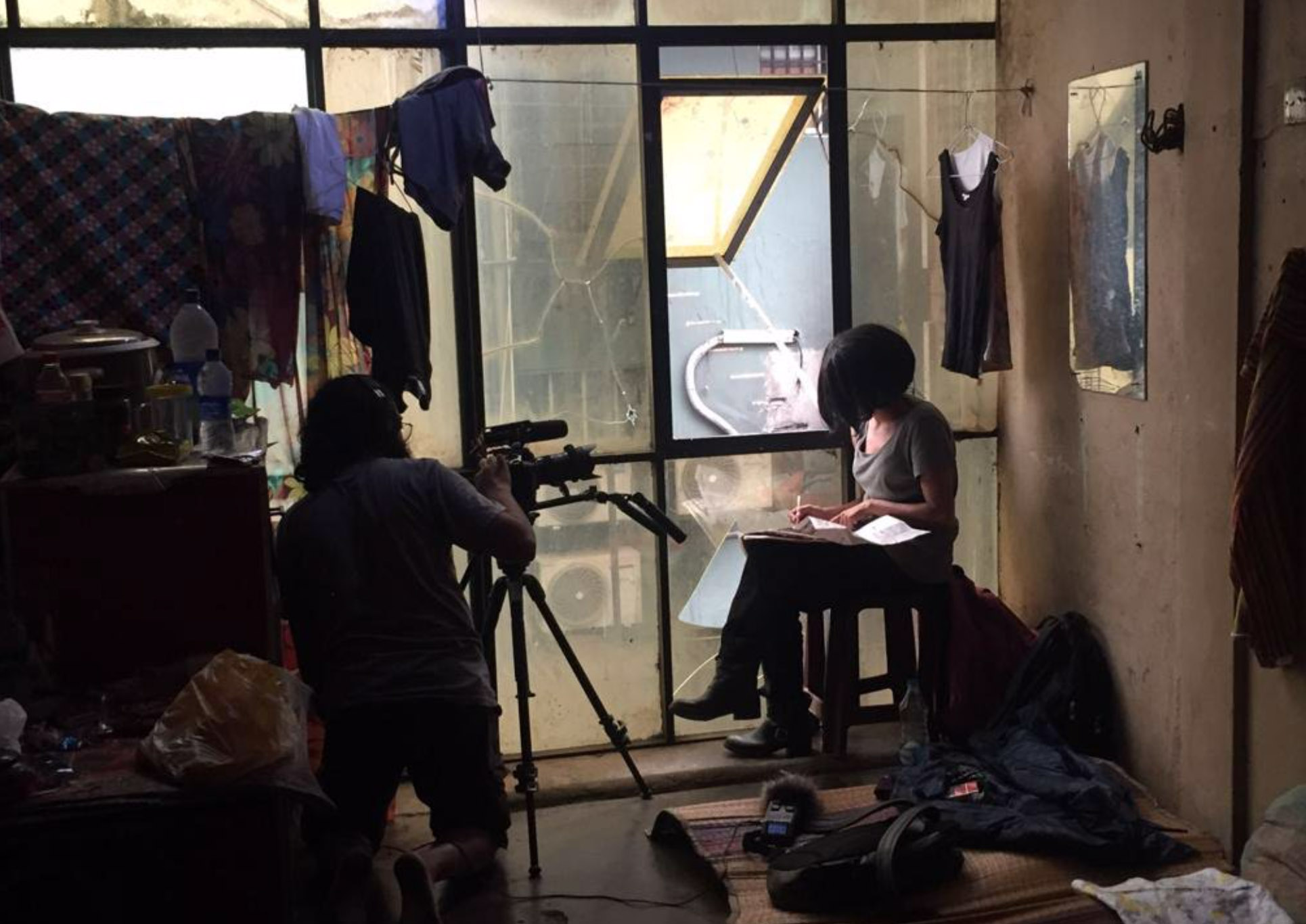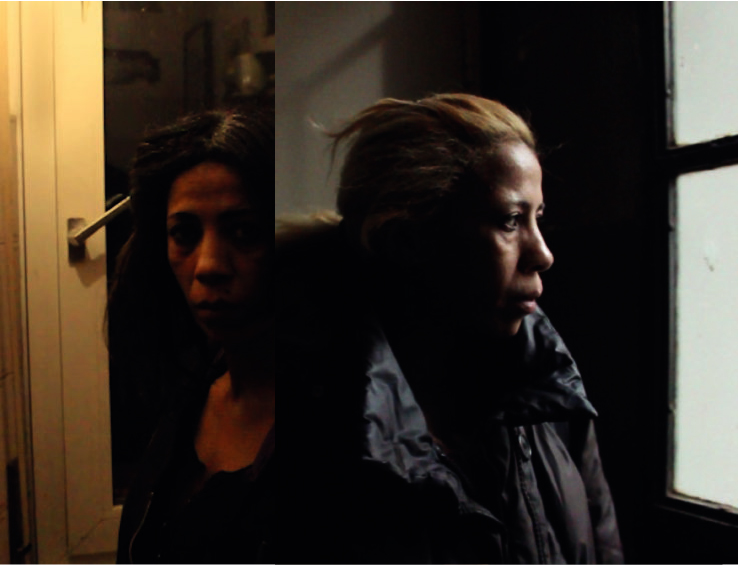Still Here
A film by Suranga Katugampala
Director / director of photography Suranga D. Katugampala Script Suranga D. Katugampala and Simona Cella Assistant camera Andrea Sestu Sound recordist Federico Allocca Matteo FusiArt directors Alessandra Orlando and Prasad Hettiarachchi Editor Nicolas Milteau Music Roberto Dell'Era, Milo Scaglioni
Produced by
5e6 Film(Italy) and Rai Cinema (Italy)
in co-production with Kaiya Collective (Sri Lanka) and Subobscura films (France)
in association with Okta Film (Italy)
Synopsis
Determined to build a new identity, a former B-movie actress leaves her two children with their father and disappears into the construction sites of a new city. In the dilapidated neighborhood where the man lives, houses are emptied and demolished by the relentless advance of the city. All that remains of the woman are the images from Natalik’s Love, the only film in which she starred.
Director notes
Still Here is the story of a fractured family. Sunil (the father), Nico (the mother), and their two children, Iman and Irene, live in isolated bubbles of waiting, solitude, and memory, seemingly disconnected from one another. They drift through fading spaces—a rundown working-class neighborhood, an old cinema, a bar where the neighborhood's adults gather—all of which are about to be swept away by the relentless march of a new, sprawling city under construction.
Nico's mysterious disappearance—swallowed up by the Swamp—creates the void around which the film revolves. Iman and Irene, having grown up wild and rootless following their mother’s constant movements, live in a perpetual state of alert, anxious about her possible permanent disappearance.
Sunil, unable to connect with his children, seeks refuge in Le Nouveau Port, drowning his inadequacy and sorrow in music and alcohol.
In the void left by their parents, Irene and Iman's initiation into adulthood begins to take shape. It's a painful yet liberating journey through the neighborhood's mysteries and the cruelty of their peers, leading them to come to terms with their mother’s disappearance.
The story has naturally formed around a hybrid genre, drawing on both noir (a mysterious woman unable to escape her fatal destiny, a city plagued by endless rain) and dark fairy tale (two children lost in a swampy forest at night).
The invasion of Reality
This film emerged from my observation of the violent gentrification affecting two neighborhoods I've frequented for several years: the Corvetto neighborhood, located in the far southeastern suburbs of Milan (Italy), and Slave Island, a suburban neighborhood in Colombo (Sri Lanka).
The more I observed the urban and architectural transformation of these two neighborhoods—which, over the years, had welcomed new communities, creating a complex layering of memories, languages, and aspirations—the more apparent it became how these changes would impact the residents. Adults and the elderly seemed to be fading into ghosts, while children and adolescents remained the only vibrant presences, willing to explore a possible future, even if it meant venturing into dangerous territories.
In Corvetto, I met many people who would later become the protagonists of Still Here, including Morgana, an eccentric Moroccan woman whose personality shaped the character of the mother. I also encountered Janith, a Sri Lankan man who had lived in the district for more than 30 years, and Angela, a woman born and raised in the neighborhood, always with an eternal cigarette in her mouth.
I had the feeling that many of the people we encountered had stepped straight out of the script. They seemed to have been conjured by a deep, burning desire for cinema.
The third space
The action is set in a very personal geographical map, where I combined spaces dear to me (Corvetto and Slave Island) with imagined spaces. In this unsettling territory, on the evanescent border between reality, memory, and imagination, certain spaces—Le Nouveau Port, the swamp, and the construction sites—have become central to the narrative, almost as if they were characters themselves.
One space that has most significantly influenced the film’s story, and especially the character of Nico, is Rio Cinema, a decaying theater in Colombo that screens soft porn and is frequented by working-class gay couples. This dying cinema, with its moldy walls, heavily worn 35mm film projections, and the noise of fans drowning out the film’s sound, evokes a true sense of Tsai Ming-Liang’s Goodbye Dragon Inn. Nico's character is partly inspired by the actress who played Joe D'Amato's Natalik's Love(1988), a italian b-movie screened at Rio Cinema. When I saw Natalik I immediately thought of Nico, they both have the same gaze and the same desires and concerns. Despite being a soft porn film, Natalik's Love is full of subtitles citing the history of cinema. Emblematic was seeing the scene in which Natalik cries while watching Anna Karenina, a 1935 film directed by Clarence Brown, where Greta Garbo commits suicide by throwing herself under a train.









Videoinstallations:
Multidisciplinary actions around the film
The process of making Still Here was long and tortuous. During this journey, many intermediate media objects emerged, allowing us to delve deeper into the initial intentions.
We called them expanded cinema actions.
Videointallation Season of great hunts















Crazy Fish Sing
Crazy Fish Sing (Yogurt Editions 2024) is a visual art book inspired by Suranga Katugampala's forthcoming film, Still Here. Situated in an experimental territory on the border between noir and documentary, the film is shot in Colombo, Sri Lanka, and Milan, Italy. Transporting the reader through its real, imagined, and affective geographies, Crazy Fish Sing offers a unique behind-the-scenes perspective on the making of Still Here and the questions this film raises about cultural hybridity, urbanization, and realism.
More info


Press
Emergence Network
[ENG]
The fugitive being of relation in S. Katugampala’s film, Still Here
Shanghai Literary Review
[ENG] CRAZY FISH SING. 𝐴 𝑆𝑜𝑢𝑠 𝑅𝑎𝑡𝑢𝑟𝑒 𝑜𝑓 Still Here By Simone Brioni, Associate Professor at Stony Brook University
Cinema Italiano
[ITA] Still Here, L'opera seconda del regista srilankese Suranga Deshapriya Katugampala presentata fuori concorso a Roma
Artribune
[ITA]
Una favola nera ha come scenario una città impossibile realizzata fondendo il quartiere Corvetto e lo Salve Island nel centro di Colombo. A raccontarla è il suo regista in questa intervista
Movie Player
[ITA]
Still Here, una Corvetto al neon per gli spazi cinematografici di Suranga Katugampala
La Voce di New York
[ITA]
“Still Here”, vite ai margini in una città che scompare
Sentieri Selvaggi
[ITA]
Still Here. Incontro con il regista Suranga Katugampala
Federcio Pedroni
[ITA]
Invenzione della memoria
Ivelise Perniola
[ITA]
Still Here/Ancora qui:
ritorni, scoperte e false partenze